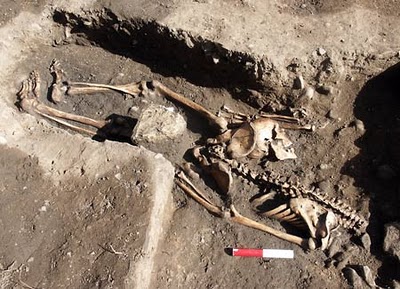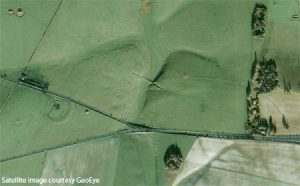 Stanford photo scientists are out to reinvent digital photography with the introduction of an open-source digital camera, which will give programmers around the world the chance to create software that will teach cameras new tricks.If the technology catches on, camera performance will be no longer be limited by the software that comes pre-installed by the manufacturer. Virtually all the features of the Stanford camera focus, exposure, shutter speed, flash, etc. are at the command of software that can be created by inspired programmers anywhere. The premise of the project is to build a camera that is open source, said computer science professor Marc Levoy.
Stanford photo scientists are out to reinvent digital photography with the introduction of an open-source digital camera, which will give programmers around the world the chance to create software that will teach cameras new tricks.If the technology catches on, camera performance will be no longer be limited by the software that comes pre-installed by the manufacturer. Virtually all the features of the Stanford camera focus, exposure, shutter speed, flash, etc. are at the command of software that can be created by inspired programmers anywhere. The premise of the project is to build a camera that is open source, said computer science professor Marc Levoy.
You could say that this has nothing to do with Ancient Worlds, but it is rather the opposite:photography is one of the most important tools currently used in archaeology to capture, store and share information about heritage sites and artefacts. Would it not be amazing if you do not have to rely on your computer back in the office to post-process your photographs? Imagine uploading your photographs directly from your camera to a server in a safe location (or Flickr)?
Bye, bye old fashioned grey-cards:custom settings for photographing in location X that could be shared between colleagues, making sure all use the same whitebalances. Add to that cataloguing data beyond normal EXIFinformation added on the spot, a camera that disables it’s flash automatically as it knows through GPSinformation its owner has taken it into a museum and stitching photographs together without having to fire up Panotools or Photoshop. Oh, and by the time you get home, you camera went through the museum’s photography database, and – using an image recognition process – tagged and titled the snapshots you took. No more having to wonder ‘now which Ptolemei was this again?’
An open-source digital single-lens reflex camera would mean DSLR + GIMP + Google Android minus phone. Although, come to think of it, most DSLRcameras nowadays come equipped with speakers and a microphone, so let’s even keep the mobile phone possibility. You could even install a few games on your camera to kill the time until that perfect sunset comes along!
Computer science graduate student Andrew Adams, who helped design the prototype of the Stanford camera (dubbed Frankencamera) imagines a future where consumers download applications to their open-platform cameras the way Apple apps are downloaded to iPhones today. When the cameras operating software is made available publicly, perhaps a year from now, users will be able to continuously improve it, along the open-source model of the Linux operating system for computers or the Mozilla Firefox web browser.
From there, the skys the limit. Programmers will have the freedom to experiment with new ways of tuning the cameras response to light and motion, adding their own algorithms to process the raw images in innovative ways.Levoys plan is to develop and manufacture the Frankencamera as a platform that will first be available at minimal cost to fellow computational photography researchers. In the young field of computational photography, which Levoy helped establish, researchers use optics benches, imaging chips, computers and software to develop techniques and algorithms to enhance and extend photography. This work, however, is bound to the lab. Frankencamera would give researchers the means to take their experiments into the studios, the landscapes, and the stadiums. On the ‘under development’ list:
- Among the most mature ideas in the field of computational photography is the idea of extending a cameras dynamic range, or its ability to handle a wide range of lighting in a single frame. The process of high-dynamic-range imaging is to capture pictures of the same scene with different exposures and then to combine them into a composite image in which every pixel is optimally lit. Until now, this trick could be done only with images in computers. Levoy wants cameras to do this right at the scene, on demand. Although the algorithms are very well understood, no commercial cameras do this today. But Frankencamera does.
- Another algorithm that researchers have achieved in the lab, but no commercial camera allows, is enhancing the resolution of videos with high-resolution still photographs. While a camera is gathering low-resolution video at 30 frames a second, it could also periodically take a high-resolution still image. The extra information in the still could then be recombined by an algorithm into each video frame. Levoy and his students plan to implement that on Frankencamera, too.
- Sometimes you like to be able to adjust the focus after to take the picture, after you take the picture, rather than having a photograph in which just one thing is in focus, or everything is on focus. If you place a micro-lens array into the camera, the Frankencamera allows you to refocus – change the focus – after you take the picture.
- Yet another idea is to have the camera communicate with computers on a network, such as a photo-hosting service on the Web. Imagine, Levoy says, if the camera could analyse highly-rated pictures of a subject in an online gallery before snapping the shutter for another portrait of the same subject. The camera could then offer advice (or just automatically decide) on the settings that will best replicate the same skin tone or shading. By communicating with the network, the camera could avoid taking a ghastly picture.
“We are therefore building an open-source camera platform that runs Linux, is fully programmable (including its digital signal processor) and connected to the Internet, and accommodates SLR lenses and SLR-quality sensors.”
Of course users with Frankencameras would not be constrained by what is already known. Theyd be free to discover and experiment with all kinds of other operations that might yield innovative results because theyd have total control.
“Some cameras have software development kits that let you hook up a camera with a USB cable and tell it to set the exposure to this, the shutter speed to that, and take a picture, but thats not what were talking about,” says Levoy. “What were talking about is, tell it what to do on the next microsecond in a metering algorithm or an autofocusing algorithm, or fire the flash, focus a little differently and then fire the flash again things you cant program a commercial camera to do.”
Within about a year, after the camera is developed – tech details in the press release – to his satisfaction, Levoy hopes to have to have the funding and the arrangements in place for an outside manufacturer to produce them in quantity, ideally for less than $1,000. Levoy would then provide them at cost to colleagues and their students at other universities.
As many ideas as Levoys team may want to implement on the camera, the real goal is to enable the broader community of photography researchers and enthusiasts to contribute ideas the Stanford group has not imagined. The success of Camera 2.0 will be measured by how many new capabilities the community can add to collective understanding of whats possible in photography.



